Rookwood grave digger Mark Bundy shares the tricks of his unusual trade
Meet Mark Bundy: the head grave digger at Sydney’s Rookwood Cemetery, where more than a million people have been laid to rest.
Central Coast
Don't miss out on the headlines from Central Coast. Followed categories will be added to My News.
NOT many people can say they’re in a dead zone when they pick up the phone, and literally mean it.
But then they haven’t met Mark Bundy, the head grave digger at Sydney’s Rookwood Cemetery, also known as the ‘Sleeping City’ where over one million people now reside.
“It’s the biggest conversation starter, ‘Where do you work?’” Mr Bundy, of Booker Bay, near Woy Woy, said.
In death, burial fees include the operator’s costs of digging the grave, backfilling the grave (which is done by hand in the case of Jewish faith burials at Rookwood), and re-landscaping.
As his title suggests, Mr Grundy digs these graves before funeral services can take place.
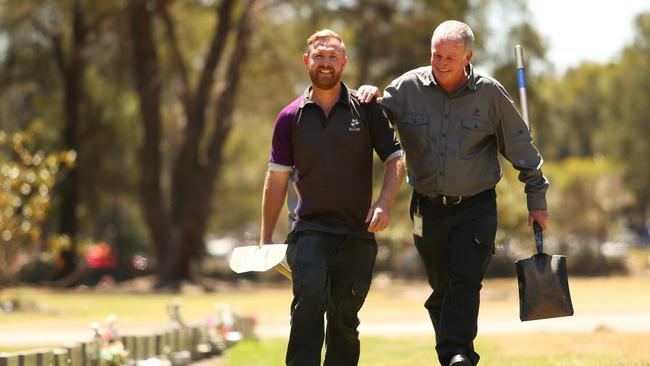
He sometimes refers to himself, tongue firmly planted in cheek, as an “underground engineer”, adding the correct title nowadays would be “funeral technician”.
He said no one had ever fallen in a fresh hole under his watch, in 25 years.
“If the gravediggers were doing their job, they’d hold them back,” he said. He went on to explain it was near on impossible to topple in.
“A lot of people do love having a stickybeak, but we have two points of entry,” Mr Bundy said.
“(Grave diggers) put a board over the top (of the hole) first, which is a metal board that will take my weight. They’ll then put witches hats on top and, sometimes, they put a crossover on top of that.”
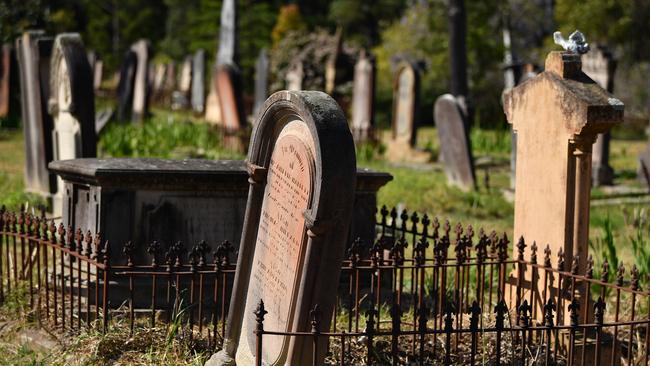
He said he was yet to see a ghost but did relate a funny anecdote of a man who bought a coffin he kept by his bed. “He’d joke to his wife, ‘If I croak in the middle of the night, just roll me into it’. He was eventually buried in that coffin (12 years later) at Rookwood.”
Mr Bundy said when Haslam’s Creek Cemetery (modern-day Rookwood) became operational in 1867 each religion had its own grave digger, making reference to the old Presbyterian, Wesleyan, Catholic, Church of England, Jewish, and independent sections.
In 1869, a railway line was extended into the cemetery by a spur line from Lidcombe, travelling south along Barnett Ave, and a railway station was built in the centre of the cemetery, he said pointing to the remnants of the No. 1 Mortuary Receiving Railway Station in the heart of Rookwood. There would eventually be four such stations.
Funeral trains carried up to 30 coffins and mourners from the Mortuary Station at Central to Rookwood. Twice-daily services operated and tickets were one shilling each way. Corpses travelled free.
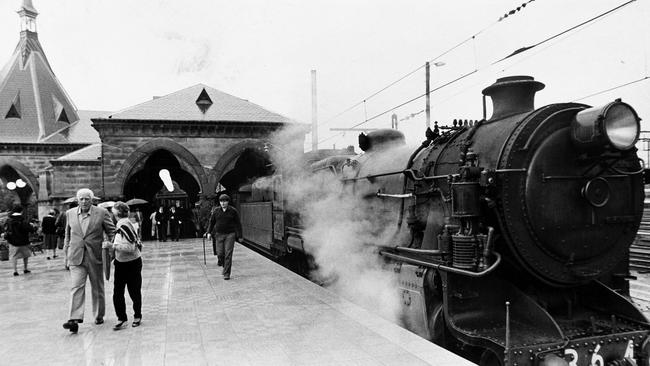
“To stop the funeral train you’d hold out a red flag,” Mr Bundy said. “The families would help take the caskets off the train, and you would then go meet your grave digger. Half an hour before the train would leave you would hear a bell ring.”
He said it could be confronting dealing with grief-stricken and sometimes very angry mourners.
“What they see is ‘you’re the last one to touch our loved one’,” he said. “My dad even said to me years ago, ‘the dead can’t hurt you; only the living can’.”
Heartbreak could also stop a staff member from wanting, or continuing, to work in the field. He described a long-serving Rookwood gravedigger who lost the will to do the job after he lost two babies.
Exhuming a body to cremate it, or relocate it, was another challenge. Depending on the level of decomposition, you may be passing parts of a body up to another grave digger, he said.
Studies show the body starts to become stiff after around three hours in death, as a result of rigor mortis, before relaxing again after 30 hours. When buried six feet down without a coffin, in ordinary soil, an unembalmed adult normally takes eight to 12 years to decompose to a skeleton.
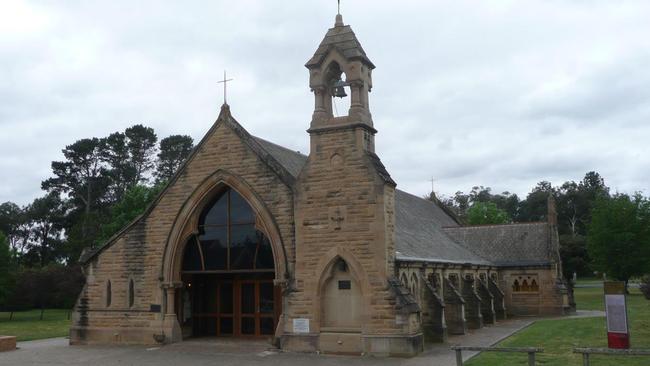
The coffin type slows down this process, as does the type of soil in which it is buried.
Mr Bundy said bodies were known to break down a lot quicker in sand, making reference to the Palmdale Lawn Cemetery & Memorial Park and the Eastern Suburbs Memorial Park in Botany
“A perfect area would be a sandy base (like) Botany,” he said.
He said in contrast, the shale in Rookwood’s soil served as a body preservative.
He recounted exhuming the mother of a woman, with whom she wished to be buried, and finding the mother’s wedding ring. He said it was touching reuniting the daughter with the family relic.
“We’ve had ones (exhumations) where the police were involved,” Mr Bundy said, making reference to murdered Sydney prostitute Sallie-Anne Huckstepp who blew the whistle on crooked cops. “Police wanted to check under her fingernails for any DNA evidence.”
Rookwood has 92 full-time employees, including 16 grave diggers who attend three to four funerals daily. They are currently looking to employ one other.
A rare opportunity for an apprentice gravedigger at Rookwood
Grave diggers stay for the entire burial service, even if it lasts several hours, and then backfill the grave after the last member of the immediate family has left the graveside. They also place people’s ashes in the earth, crypts, and mausoleums.
The cemetery offers over 130 culturally specific and non-denominational interment areas and practises 14 burial types, and has three training graves where people can be taught the correct way to lower a casket.
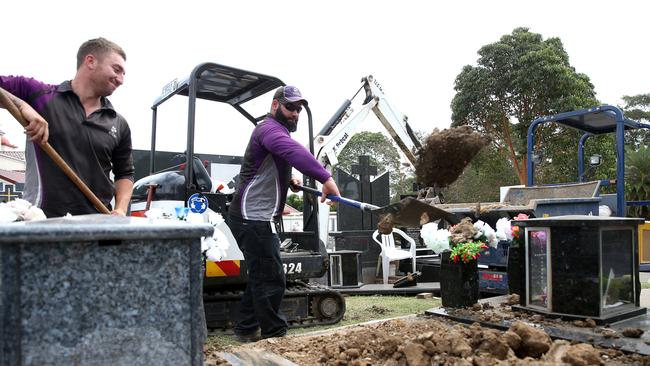
“I’d rather people learn here than going to a gravesite ... and getting their hands caught,” Mr Bundy said.
Grave diggers complete a Certificate III in Gravedigging, Grounds and Maintenance at TAFE which teaches how to dig graves (manually and using machinery), how to exhume burial sites, and how to deal with grief, among other things.
Mr Bundy, also the general manager of operations at Rookwood General Cemeteries Reserve Trust, starts them off in maintenance and then slowly introduces them to funerals to see if they are comfortable.
As part of their TAFE training they also learn how to deal with soil conditions, cultural
differences regarding burials, and how to dispose of bodies in compliance with the NSW Health Department.
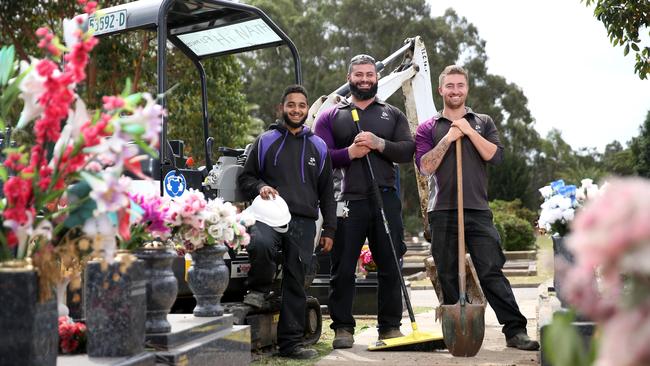
Mr Bundy said Jewish faith burial plots were backfilled by hand, while the Islamic burial guidelines required bodies be buried facing west towards Mecca. Both faiths forbade cremations.
“The Muslim faith are buried in underground tombs, by 5.30pm in daylight savings,” he said.
“We always have two graves ready to go because their belief is to be buried in 24 hours.”
■ famous grave diggers include British serial killer Peter Sutcliffe and Abraham Lincoln, later President of the United States, who worked as a sexton in a churchyard in Indiana
■ 4 tonnes of dirt goes into a new grave at Rookwood
■ a mini excavator dig takes 30 minutes, versus all day for a hand dig
■ there are currently around 1887 funeral workers working in NSW, taking home $1,024 a week on average (before tax)
Cemeteries
■ The NSW Cemeteries and Crematoria Register lists 22 active cemeteries in the Central Coast local government area.
■ They are: Point Clare, Wamberal, St Peter’s Greengrove, Noraville, Jilliby, Yarramalong, Mount White, and Lisarow Anglican cemeteries; Pioneer Park in Point Frederick; Bradys Gully Cemetery in North Gosford; St Thomas Anglican Church in Upper Mangrove; St Barnabas Cemetery in Yarramalong; Ronkana Cemetery in Fountaindale; Palmdale Lawn Cemetery & Memorial Park; Greenway Memorial Gardens Pty Ltd in Green Point; St Paul’s Cemetery in Kincumber; Anglican Christ Church in Gosford; The Church of the Holy Trinity in Terrigal; Anglican Parish of Woy Woy; St James Memorial Garden in Wyong; Holy Trinity Catholic Cemetery in Spencer; and St Patrick’s Memorial Wall in East Gosford.
■ Also in the LGA are two crematoria in Palmdale: Mackay Family Crematorium and Palmdale Lawn Cemetery & Memorial Park.


